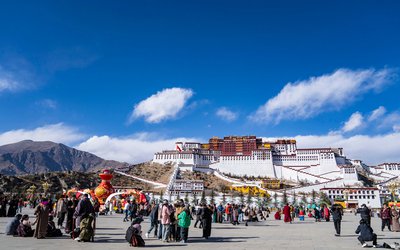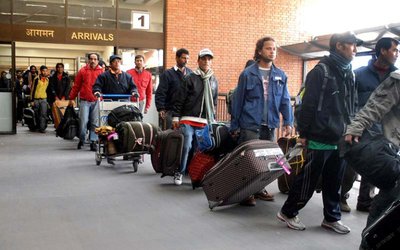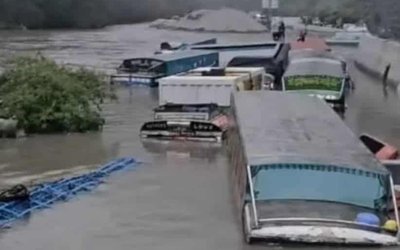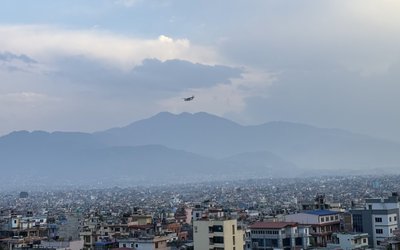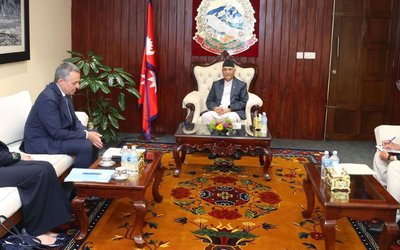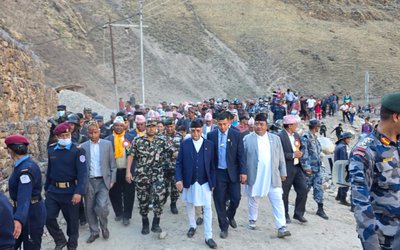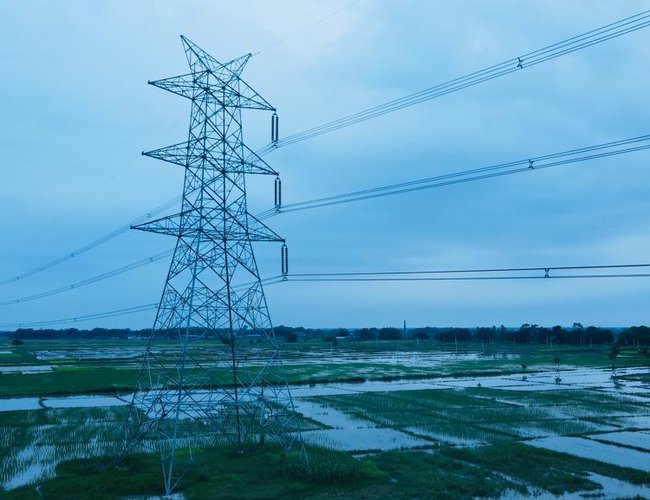
Nepal is currently at a crucial point where its development objectives rely heavily on global commitments. The Asian Development Bank (ADB) and World Bank Group (WBG) are major contributors to Nepal's official development assistance, providing approximately 70% of the funding. Recently, both institutions have unveiled their country priorities and strategies for Nepal: ADB's Country Partnership Strategy (CPS -FY2025–2029) and WB's Country Partnership Framework (CPF- FY2025–2031). These strategies are in line with Nepal's 16th periodic National Plan and Green, Resilient and Inclusive Development (GRID) framework. ADB's CPS aims to support inclusive, resilient, green, and job-creating economic growth with three main priorities: 1) Promoting private sector-led, job-intensive, green economic transformation; 2) Enhancing inclusive and high-quality human capital development and public services; 3) Strengthening environmental sustainability and climate resilience, along with addressing crosscutting themes. Similarly, WB's CPF focuses on two key development challenges: creating jobs and building resilience to natural disasters. The framework emphasizes the importance of balancing transformational goals with immediate results, aiming for three main outcomes: 1) Increased and improved employment opportunities; 2) Enhanced connectivity within communities; 3) Sustainable and resilient environments. Both institutions' strategies provide a clear roadmap for advancing clean energy expansion, enhancing climate resilience, and fostering inclusive growth in Nepal.
Clean Energy Expansion and Regional Integration
Nepal has made significant progress in electrification, with installed capacity exceeding 3600 MW by 2025, primarily from hydropower sources. Over 95% of the electricity is generated from hydropower, and almost all households in the country now have access to electricity, a remarkable achievement given Nepal's challenging terrain and scattered population. Despite these advancements, Nepal's power system still faces challenges, including seasonal variations in hydropower generation, leading to supply fluctuations, frequent power outages, and disruptions in industrial activities. The transmission infrastructure is also inadequate, with limited reserve capacity, making the system susceptible to blackouts.
The World Bank's Country Partnership Framework (CPF) aims to improve energy connectivity, reliability, and resilience by supporting large-scale energy projects like Upper Arun and Dudhkoshi Storage Hydroelectric, in collaboration with the Asian Development Bank (ADB), and complementing existing initiatives such as Upper Trishuli-1. These projects not only aim to expand domestic energy access but also position Nepal as a clean energy exporter, particularly to India under the 10,000 MW electricity trade agreement. The CPF recognizes the energy sector's crucial role in enhancing productivity in various sectors like digital services, connectivity, tourism, and urban development through reliable power supply and sustainable infrastructure. With a significant portion of Nepal's GDP dependent on remittances and limited domestic job opportunities, the energy sector presents an opportunity to attract private investment and create employment opportunities.
The ADB's Country Partnership Strategy (CPS) acknowledges hydropower as a key driver of Nepal's development, offering benefits such as clean energy, export revenue, industrial productivity, ecotourism growth, and foreign investment opportunities. The ADB places emphasis on prioritizing peaking run-of-river and storage projects to store excess monsoon energy, thereby stabilizing the energy supply. It also plans to upgrade transmission infrastructure, including cross-border connections with India, and implement smart grid technology to improve reliability. The ADB will support the diversification of Nepal's energy sources beyond hydropower to include solar and other renewables, while encouraging private sector involvement through policy and regulatory changes. Climate adaptation and disaster resilience will be integrated into the design of hydropower projects, transmission systems, and substations. Nepalis are actively engaged in regional electricity trade, with India committing to import 10,000 MW from Nepal in the next decade and Nepal already exporting power to Bangladesh, indicating a growing regional demand and confidence.
To accelerate Nepal's energy development, significant investments, regulatory adjustments, and private sector engagement are necessary. The World Bank (WB) backs the promotion of hydropower-driven, low-carbon growth by advancing policy reforms, enhancing governance, and creating a conducive environment for Independent Power Producers (IPPs). The ADB and WB jointly aim to mobilize substantial investments over the next 5-7 years, while also providing policy guidance and capacity-building assistance to attract private investments and enhance sector governance. These initiatives will modernize Nepal's electricity sector, making it more reliable, resilient, and integrated within the region, which is crucial for sustained economic growth and poverty alleviation.
Climate Resilience and Social Inclusion
Nepal is highly vulnerable to climate change, ranking second in multi-hazard mortality risk due to various natural disasters. The country has experienced an annual temperature increase of approximately 0.06°C, leading to accelerated glacier melting and increased disaster risks. Despite its low greenhouse gas emissions of around 1.06 tons per capita, Nepal faces significant climate impacts, especially in rural and mountainous regions that rely on agriculture and natural resources.
Nepal's GRID framework focuses on integrating climate adaptation and mitigation measures across different sectors. Investments are made in climate-resilient infrastructure, nature-based solutions such as reforestation, and climate-smart agriculture programs. Capacity building is a key priority for implementing Nepal's Nationally Determined Contributions (NDCs), Long Term Strategy for Net Zero Emission (LTS), and National Adaptation Plan (NAP).
Both ADB and WB support Nepal's efforts with a comprehensive approach that includes energy transition, sustainable forestry, resilient urban development, and low-carbon transport. They also assist in establishing early warning systems and shock-responsive social protection measures to enhance disaster preparedness and reduce vulnerability. Inclusivity is emphasized, with a focus on providing reliable electricity access to all households, particularly in remote hilly districts like Karnali and Sudurpaschim. ADB and WB promote decentralized renewable energy solutions for last-mile electrification and community resilience, empowering women and fostering community ownership to improve health, livelihoods, and reduce emissions.
ADB and the WB are working together to support Nepal in enhancing its climate resilience and environmental sustainability. ADB is focusing on clean energy projects such as hydropower and grid upgrades, as well as promoting low-carbon solutions like electric transport and e-cooking. ADB will also work on strengthening policies and institutions aligned with Nepal's climate goals and integrating resilience into infrastructure. The organization aims to expand access to climate finance through various mechanisms and increase private sector participation. The WB, on the other hand, is prioritizing gender equity and local governance reforms, helping municipalities improve energy access and climate service delivery. The WB has identified potential projects in its Country Partnership Framework, including the Nepal Clean Air and Prosperity Project, to address air pollution. Both partners are committed to improving governance, implementing digital procurement processes, and enhancing federal-provincial coordination to accelerate project implementation and ensure accountability.
Financing and Implementation
Nepal has set ambitious climate and energy goals in NDC 3.0, LTS, and NAP, requiring innovative financing and systemic reforms beyond traditional subsidies and concessional loans. The estimated cost to meet the NDC’s mitigation target is $73.7 billion until 2035, with the NAP projected to cost $47.4 billion until 2050. Due to limited domestic resources, multilateral development partners like ADB and WB play a crucial role in meeting these financial needs. ADB has allocated $1,915 million for Nepal from 2025-2028, while WB has allocated US$1,956 million from FY26-31, with additional support expected from other funding sources.
ADB aims to mobilize innovative finance for climate through blended finance, attracting private investments, creating domestic bonds, opening carbon markets, and supporting disaster risk financing. It also promotes green bonds and integrates climate priorities in public finance. The WB Group will mobilize private investment through PPPs and instruments like the WBG guarantee platform, IDA’s private sector window, and MIGA guarantees. The WB complements these efforts with DPCs, supporting fiscal reforms, PPPs, and results-based financing linked to resilience outcomes. These reforms embed climate priorities in national planning and enhance Nepal’s access to global climate funds.
A landmark achievement is the development of strategies that align Nepal's development agenda, marking the first fully coordinated country partnership between ADB and the WB in Nepal. This alignment improves policy coherence, reduces duplication, and creates co-financing opportunities for large infrastructure projects that support Nepal's federal governance and Sustainable Development Goals (SDGs). Effective implementation is essential, with both banks emphasizing the need to accelerate public investment reforms, enhance institutional capacity at all levels, and promote meaningful engagement with local communities and the private sector. Improvements in public financial management, procurement efficiency, and intergovernmental coordination are crucial to ensuring transparent and efficient use of resources. Nepal's coordinated partnership with the ADB and WB presents a unique opportunity to tap into its abundant clean energy potential, enhance climate resilience, and promote inclusive development. Through coordinated investments and a robust reform agenda, Nepal can position itself as a regional clean energy leader and a global model for climate-smart development in mountainous, disaster-prone regions.
References
- Asian Development Bank. Country Partnership Strategy for Nepal (2025–2029)
- World Bank Group. Country Partnership Framework for Nepal (FY2025–2031)
The author is currently working as Director at the Alternative Energy Promotion Centre (AEPC), Ministry of Energy, Water Resources and Irrigation, Government of Nepal. The opinions expressed in this article belong solely to the author’s personal views and do not reflect the views of the author’s organization. He can be reached at mukeshghimire.ku@gmail.com

